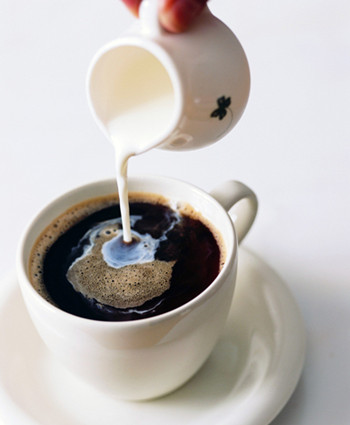The taste of coffee is generally used as a word for coffee taste.

Coffee trees are very similar to laurel and usually grow between the Tropic of Cancer and the Tropic of Cancer.
A coffee tree usually grows for about three to four years before it begins to bear fruit. The fruit is a red berry, which is dried and the pulp is removed to separate the coffee beans.
There are shadows of coffee beans all over the world, and they can grow as usual as long as the climate is right. These places suitable for the cultivation of coffee beans are located between the Tropic of Cancer and the Tropic of Cancer, collectively referred to as the "coffee growth zone". Coffee beans grow into different species depending on farming methods, regional climate and various factors.
Before introducing which country produces that kind of coffee beans, we might as well first understand the various congenital factors that can affect the texture of a cup of coffee. The so-called taste of coffee is the combination and harmony of the aroma that coffee can give to the nose and the taste it brings to the tongue.
The first impression of a cup of coffee is its "aroma". This fragrant and depressing smell can lift one's spirits and thoroughly appreciate a cup of high-quality coffee.
The second impression is the "taste" of coffee. The sour taste of coffee is the main consideration of its taste. Although the acidity of the whole nation is not directly related to the quality of coffee, as the most connotative part of coffee beans, sour taste brings varying degrees of taste to coffee.
Finally, there is the "taste" of coffee. Although it is not a major factor in the quality of coffee, it can complement each other with the aroma and taste of coffee, giving people a clear sense of the more tangible texture of coffee beans.
Words commonly used for coffee taste
Rich (Richness)
Generally refers to the texture and satisfaction of coffee.
Complexity (Complexity)
Used to describe the understanding and experience of a variety of tastes.
Degree of balance (Balanced)
Describe coffee as very even on all sides.
General coffee taste characteristics
Bright (Bright), dry (Dry), intense (Snappy) and intense (typical of Snappy Central American coffee)
Caramel flavor (Caramelly)
Sugar or grain syrup taste
Chocolate (Chocolatey)
Suitable for post-meal taste, the same as non-sweet vanilla and chocolate.
Detailed (Delicate)
A steady and obscure taste (often used to describe Aberga coffee in New Guinea) from the top of the tongue.
Local flavor (Earthy)
Soil taste (often used to describe Sumatran coffee)
Aroma (Fragrant)
Generally refers to the fragrance of flowers and even the aroma of spices
Fruity (Juicy,Fruity)
It has an aftertaste of berries and even citrus.
Aromatic alcohol (Mellow)
A round, slippery taste that is generally less acidic
Nut flavor (Nutty)
A taste suitable for drinking after a meal, similar to the taste of baked nuts
Spice flavor (Spicy)
Unforgettable spice taste, excellent smell
Sweet (Sweet)
Very easy to enter
Non-alcoholic taste (Wildness)
An unusual and challenging taste (often used to describe Ethiopian coffee)
Wine taste (Winey)
Suitable for the unforgettable taste of wine after dinner (often used to describe Kenyan and Yemeni coffee)
Important Notice :
前街咖啡 FrontStreet Coffee has moved to new addredd:
FrontStreet Coffee Address: 315,Donghua East Road,GuangZhou
Tel:020 38364473
- Prev

Nestl é Coffee ranks among the world coffee brands
Nestle Nescafe: coffee with a long history, founded in 1867. The Bird's Nest trademark was designed at the end of the 19th century to pray for a reduction in infant mortality in the world. UCC: founded in Japan in 1933, it is the most successful Japanese brand in the world and a guarantee of quality. Royal Copenhagen RoyalCopenhagen: has always had a high-quality evaluation of the royal Copenhagen.
- Next

Coffee Chronicle the Historical Development of Fine Coffee
In the 6th century, on the plateau of Abyssinia, a shepherd named Caldai drove goats to the new prairie for grazing, and accidentally found coffee fruit due to the accidental feeding of goats. In the early 10th century, Dr. Daggers, a famous doctor in Iraq, admitted and documented the pharmacological effects of coffee. This is one of the earliest valuable medical records of coffee. In the 11th century, the Arabs invented the whole
Related
- Beginners will see the "Coffee pull flower" guide!
- What is the difference between ice blog purified milk and ordinary milk coffee?
- Why is the Philippines the largest producer of crops in Liberia?
- For coffee extraction, should the fine powder be retained?
- How does extracted espresso fill pressed powder? How much strength does it take to press the powder?
- How to make jasmine cold extract coffee? Is the jasmine + latte good?
- Will this little toy really make the coffee taste better? How does Lily Drip affect coffee extraction?
- Will the action of slapping the filter cup also affect coffee extraction?
- What's the difference between powder-to-water ratio and powder-to-liquid ratio?
- What is the Ethiopian local species? What does it have to do with Heirloom native species?

